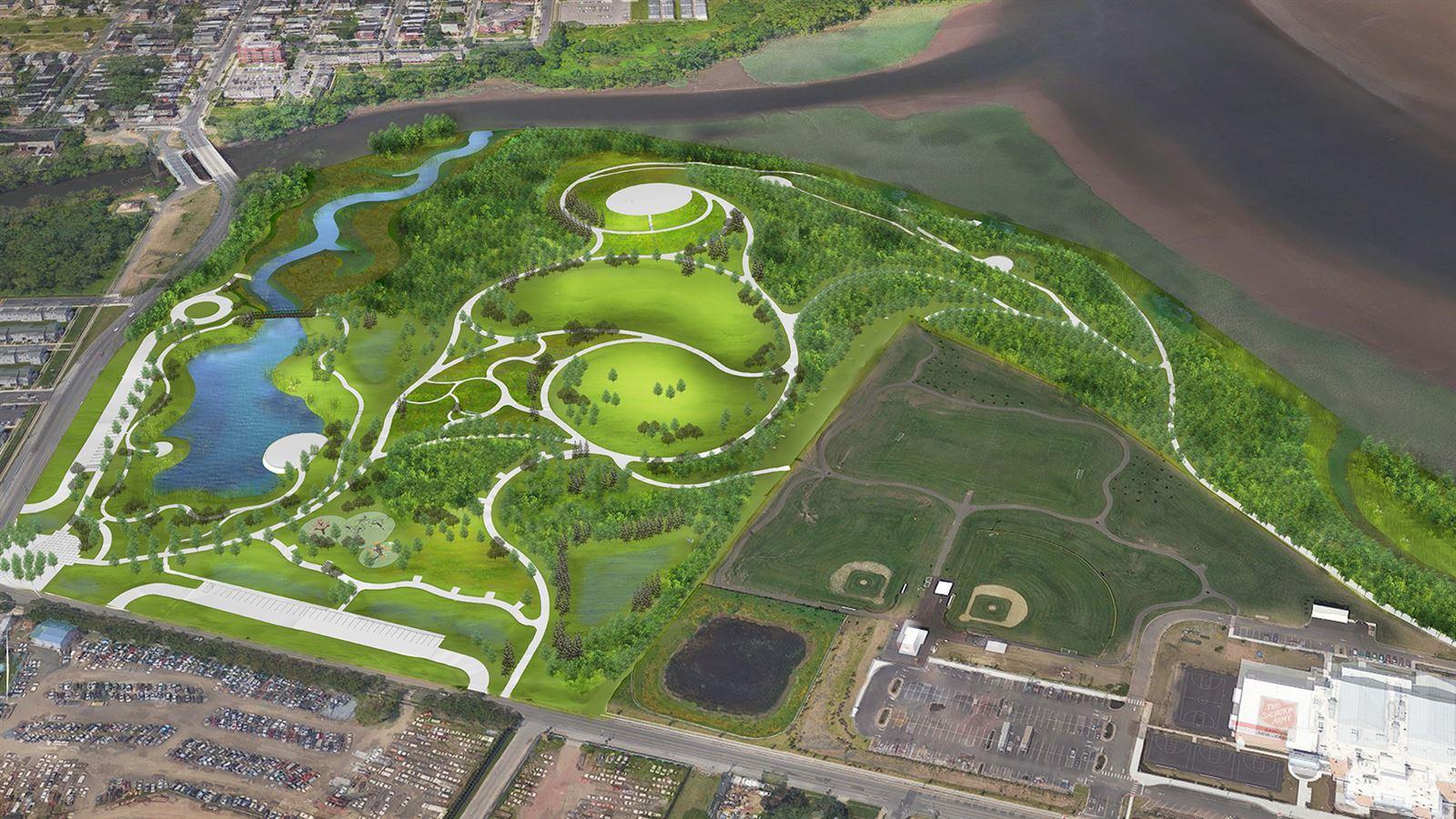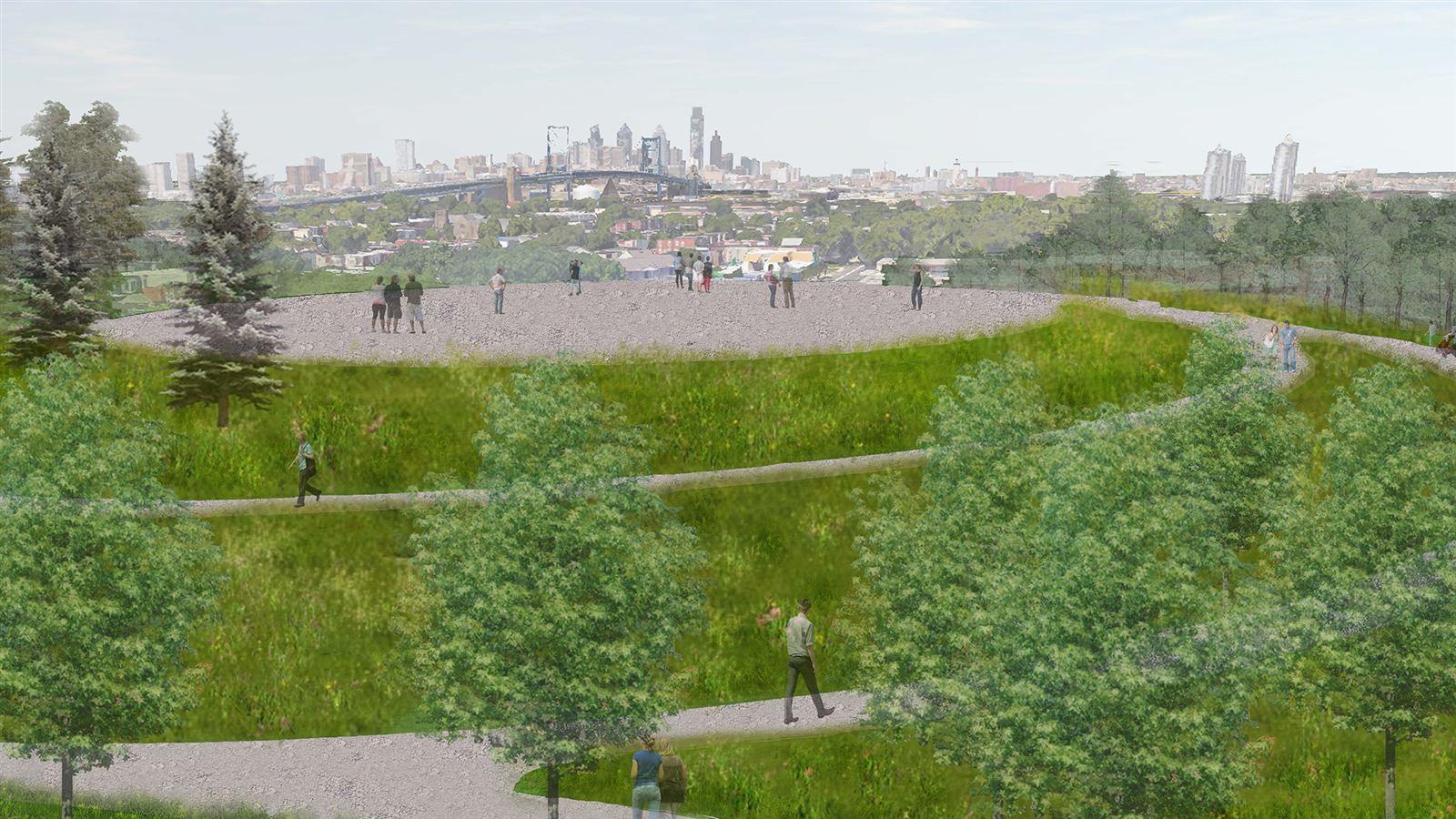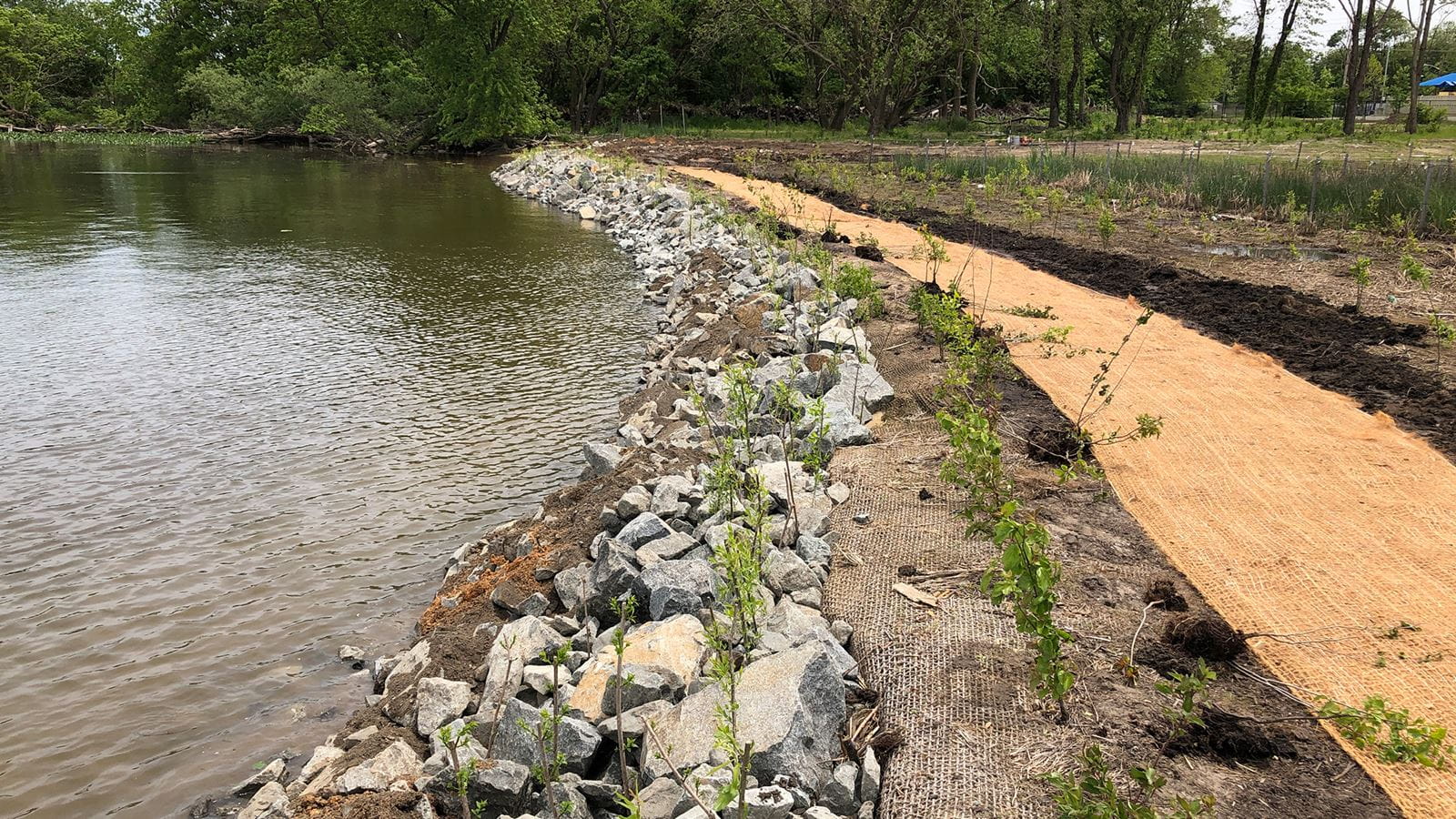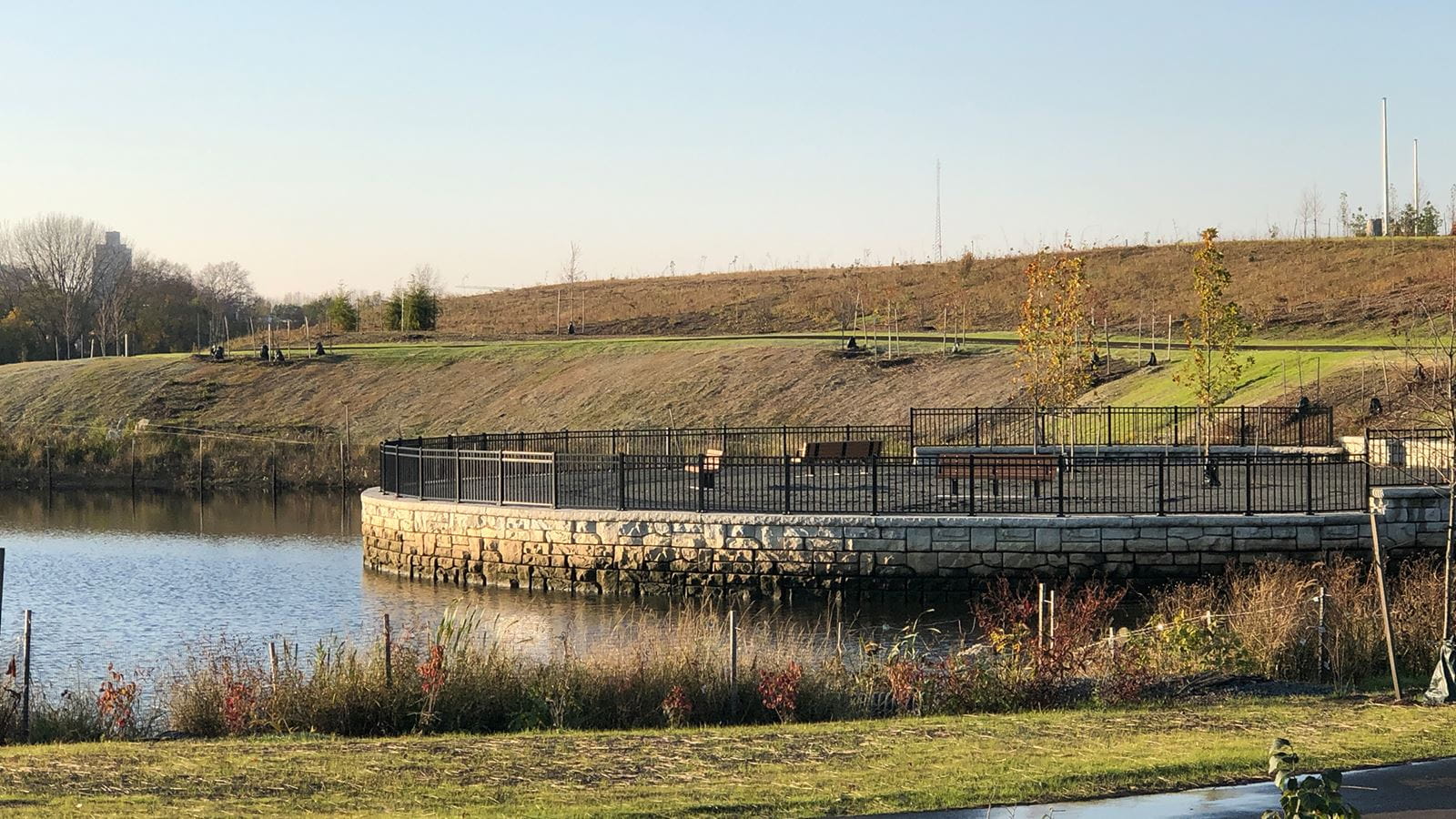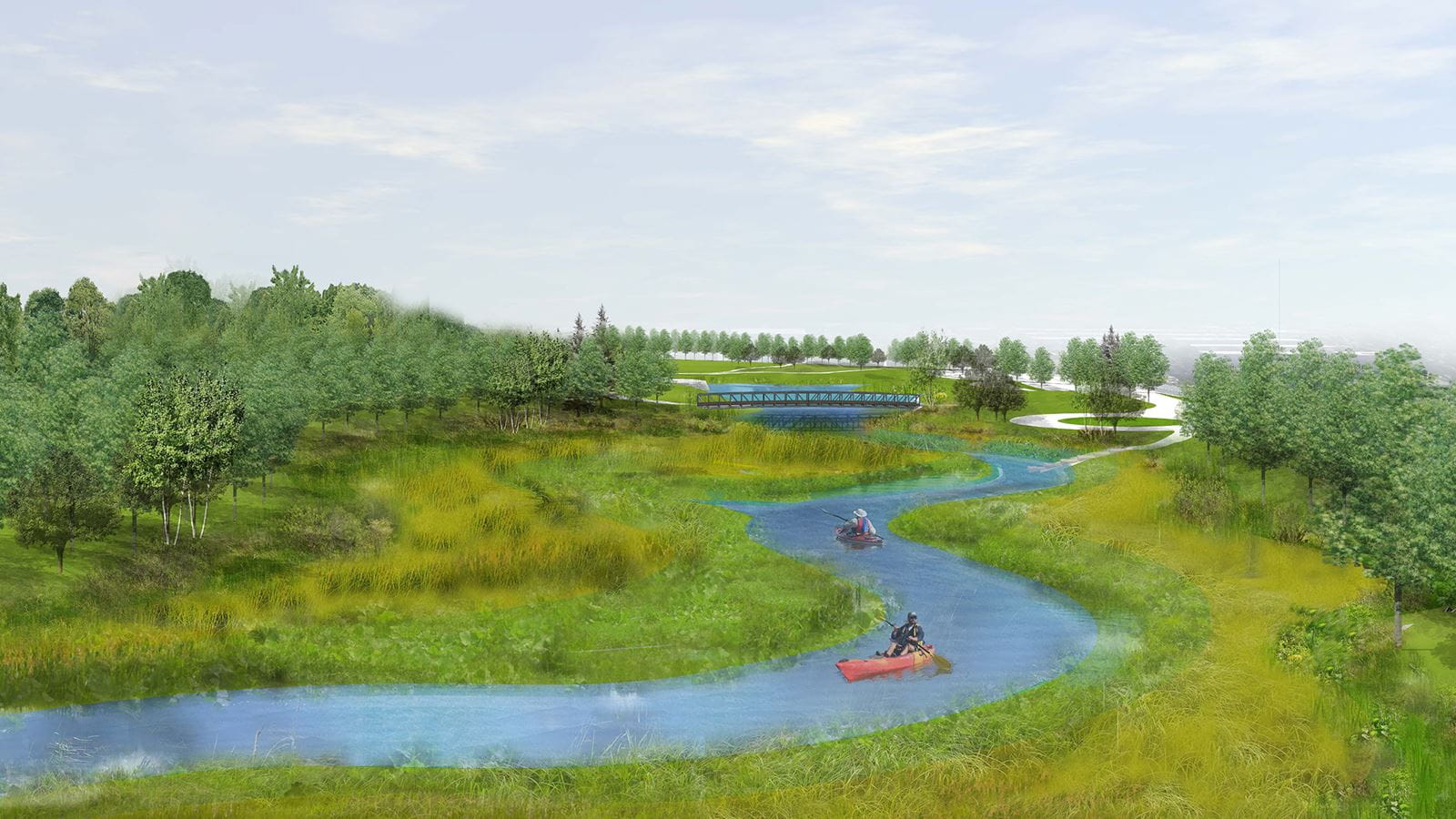Breathing New Life into the Delaware River Shoreline
Camden’s waterfront once hosted some of the world’s most iconic manufacturers: RCA Victor, Campbell’s Soup, and the World War II-era New York Shipbuilding Corporation, but the surging metropolis eventually slowed to a halt. Due to leftover steel and concrete from this industrial era, proximate residents of the Cramer Hill neighborhood never had a proper access point to the Delaware River. But today, channeling Walt Whitman's description of Camden as "a city invincible," state and local agencies have transformed the city’s Harrison Avenue Landfill into a destination community asset, Cramer Hill Waterfront Park.
A Diamond in the Rough
Once dubbed “the dumps” by locals, Camden’s Harrison Avenue Landfill operated as a municipal landfill from 1952-1971. Since it was never decommissioned, unauthorized waste disposal continued throughout subsequent decades.
The site of an abandoned landfill may not seem like fertile grounds for revitalization, but perceptive landscape architects were able to spot untapped potential amid the brush, construction and demolition debris, concrete, bricks, tires, and scrap metal.
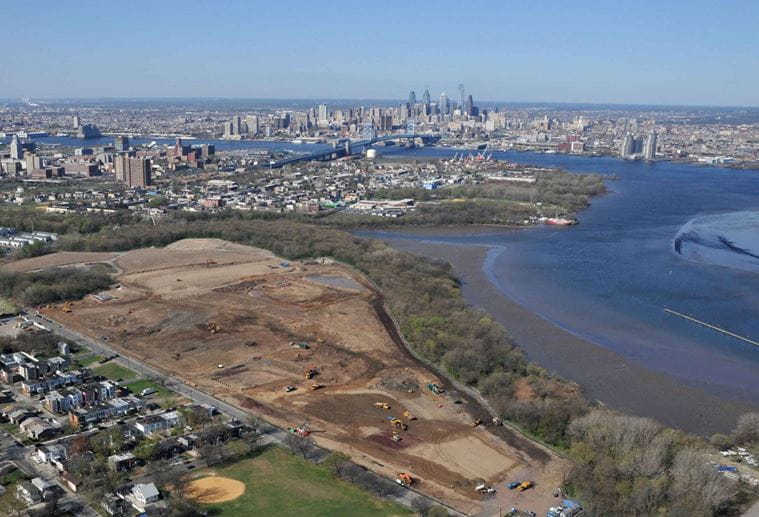
Before designs to beautify the site could begin, the city knew it had to peek beneath the dirt and debris. After operation, the landfill was never capped, a process now mandated under federal law. Landfill capping isolates and contains contaminated solid waste and soil to prevent harmful chemical compounds from leaking into the environment. With funding secured from the state’s Hazardous Discharge Site Remediation Fund (HDSRF), the New Jersey Department of Environmental Protection (NJDEP) began remedial investigations in 2006.
Soil studies mostly yielded groundwater and leachate typical for a city dump, but a parcel of land in the southeast section did reveal some contamination from two chemical solvents—chlorobenzene and dichlorobenzene—which required immediate attention. CDM Smith joined the project team to perform a pre-design investigation through which scientists and engineers could identify the extent of the contamination plume. A closure plan followed, and NJDEP had everything it needed to launch the Harrison Avenue Landfill transformation.
Developing a Design Strategy
The goals were two-fold. First, the project team needed to return the site to its preindustrial state by applying design elements that mimicked natural processes. Second, they had to replace a formerly blighted urban landfill with a vibrant outdoor destination.
For the project design team, that meant tackling a series of landscape challenges, like sculpting a timeless park with public amenities and universal access, creating tidal wetland systems, and integrating green infrastructure and areas of reforestation. They settled on a four-pronged strategy:
- Restore Natural Resources—Instead of the gray, barren and uninviting dumping grounds, the Cramer Hill Waterfront Park now showcases seven acres of new tidal freshwater wetlands, a tidally-influenced fishing pond, and 20 acres of reforested vegetative communities. The paved trails lead to scenic overlooks and a pedestrian bridge that allow locals to enjoy the flora and fauna safely and respectfully. Nearly 2.5 acres of pollinator meadows have been planted. The fishing pond was designed with constructed habitats to facilitate the establishment of local species.
- Protect the Shoreline—An obvious challenge of the Harrison Avenue site revitalization is tied to its former life as a landfill. More than 3,000 feet of unstable, steep shoreline slopes created an uninviting perimeter. Engineers and scientists stabilized the shoreline to prevent erosion and leachate seeps utilizing bioengineered slope stabilization techniques and “living shorelines”—a term used to describe a natural infrastructure solution that creates a protected, stabilized tidal shoreline made of natural materials such as vegetation, sand, or rock. Additionally, CDM Smith environmental scientists performed an in-depth tree survey along the shoreline and identified contiguous areas of priority eagle-habitat, which were isolated in the constructed wetland design and preserved as conservation islands to provide eagles and other wildlife suitable habitat while the park habitats establish and mature.
- Close and Cap the Landfill—As part of the landfill capping process, project teams have excavated and redistributed over 300,000 cubic yards of solid waste and soil. A passive gas venting system was also installed with vents hidden from the public eye by integrating them into light poles, along with a semi-permeable cap of clean fill material and vegetation.
- Build the Park—Completed in 2021, the waterfront park includes an amphitheater, entry plaza, a universal playground, exercise stations, a 2-acre pond and fishing plaza, 3.5 miles of hiking and biking trails, interpretive signage, a kayak launch, picnic area, sensory garden, shoreline observation areas, and a summit vista with panoramic views of the Philadelphia skyline and Delaware River Waterfront.
"Today, this greenspace rivals any park in the state and represents the kind of investment and change that Camden deserves,” said Camden County Commissioner Jeff Nash at the park's ribbon-cutting on November 30th, 2021. "I grew up in Cramer Hill and I could never have imagined the transformation of this former landfill into such a beautiful community asset,” said Camden Mayor Victor Carstarphen. “The park is not only a $48 million investment in our neighborhoods, it’s an investment in the quality of life for all of our residents and a symbol of revitalization for the community."

I’m inspired to deliver successful projects with the mentorship that I’ve received, and this in turn drives me to pass along my knowledge and expertise to my team.

